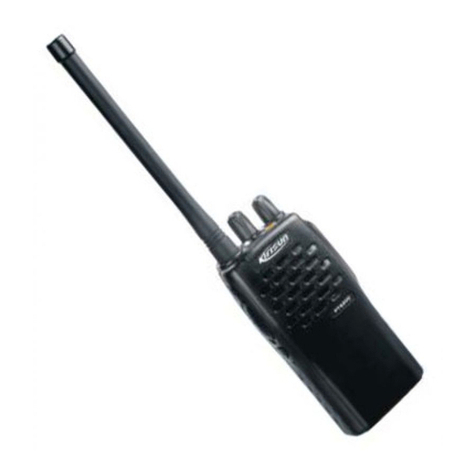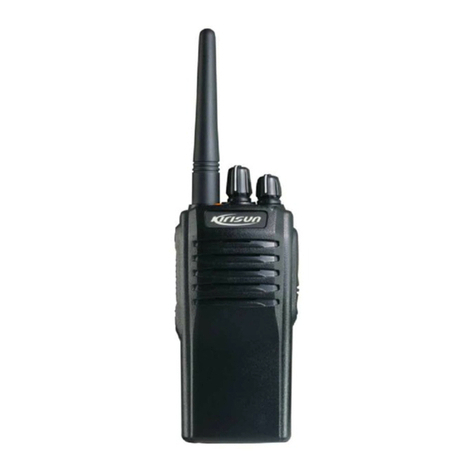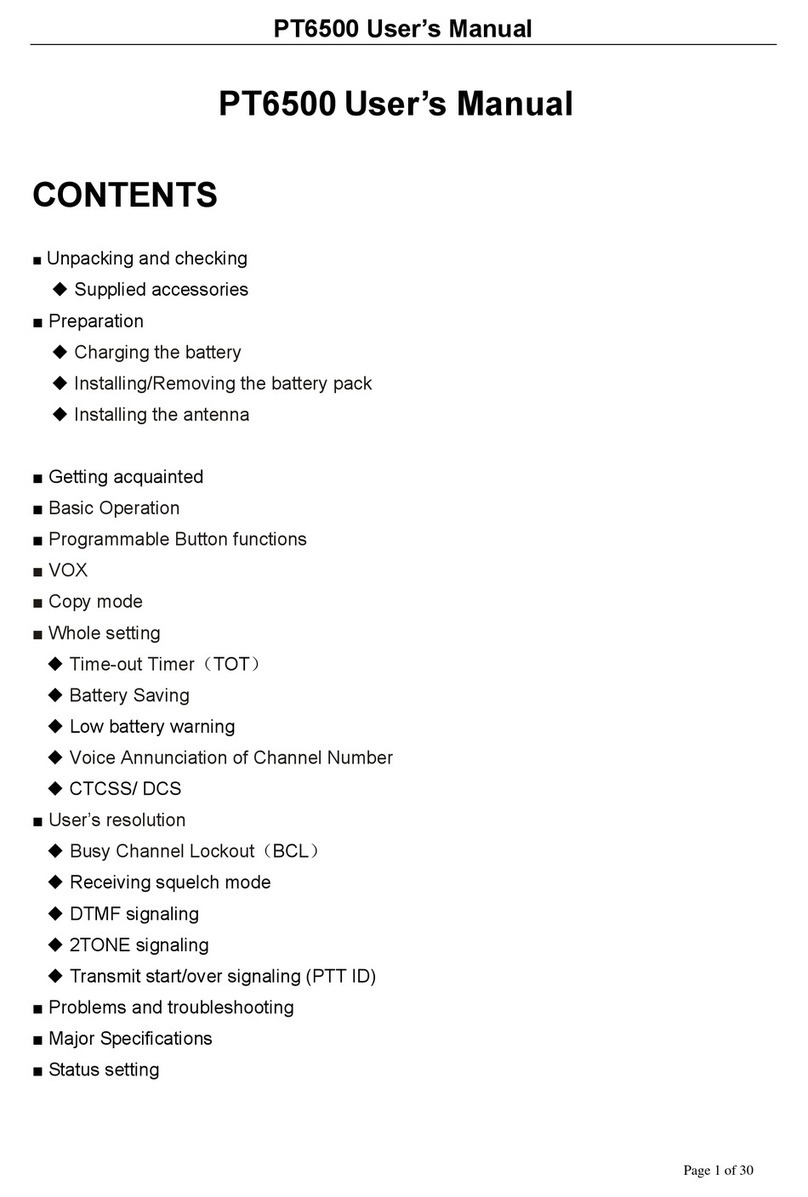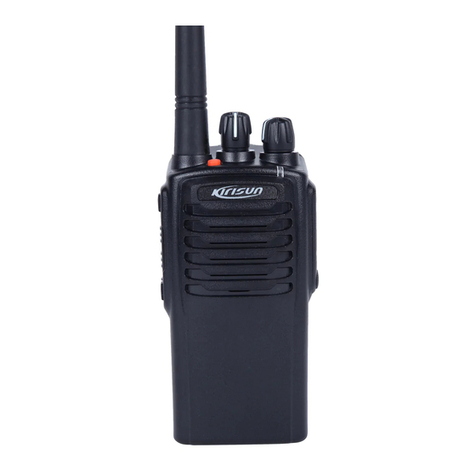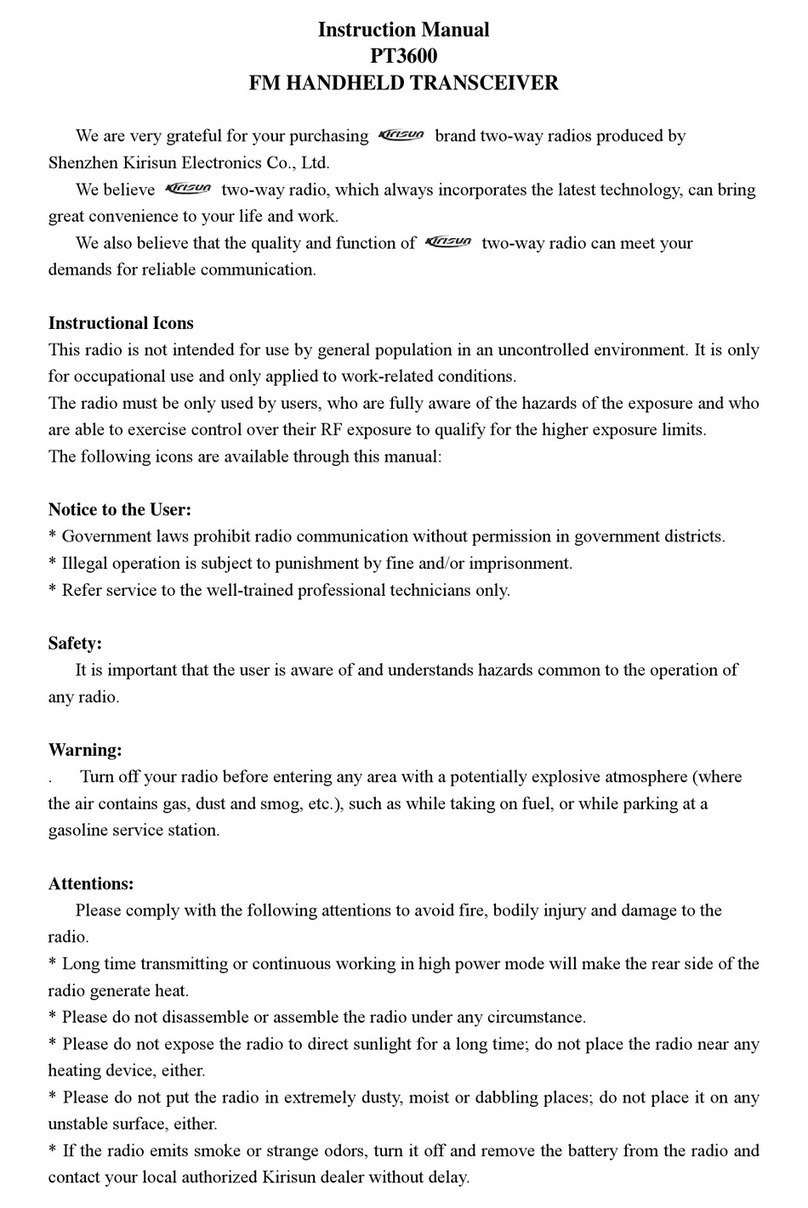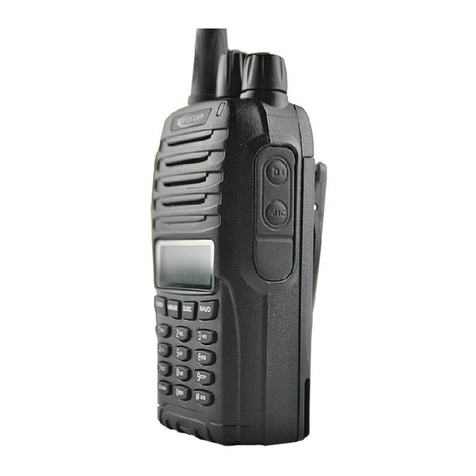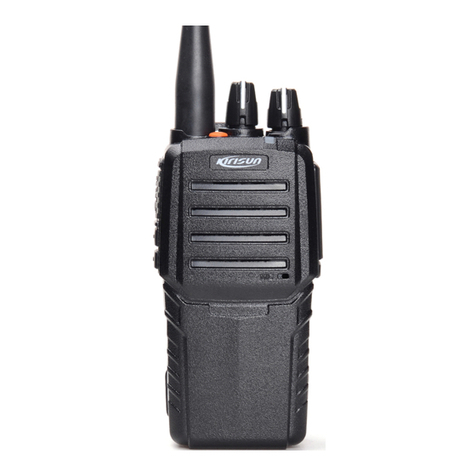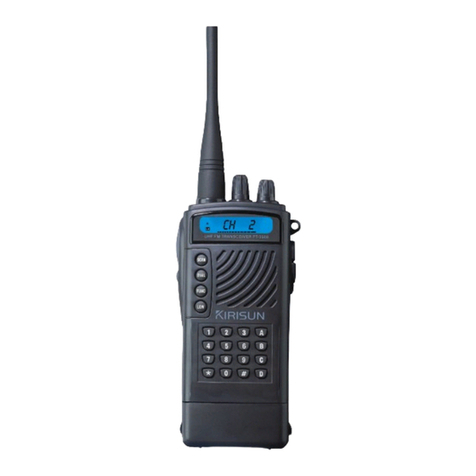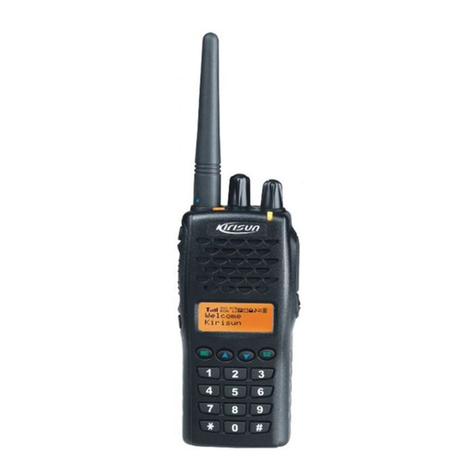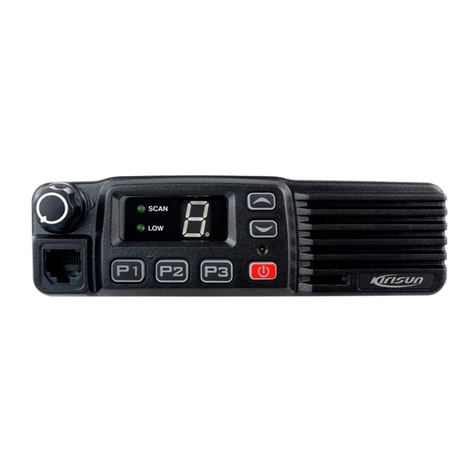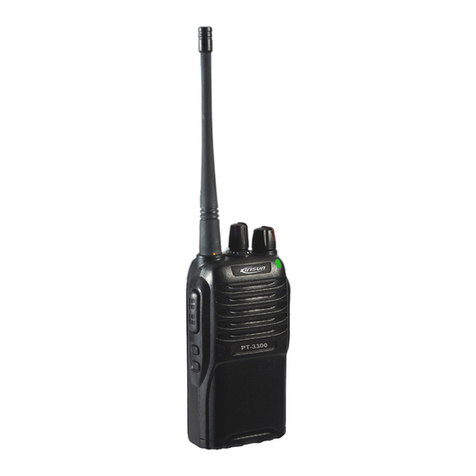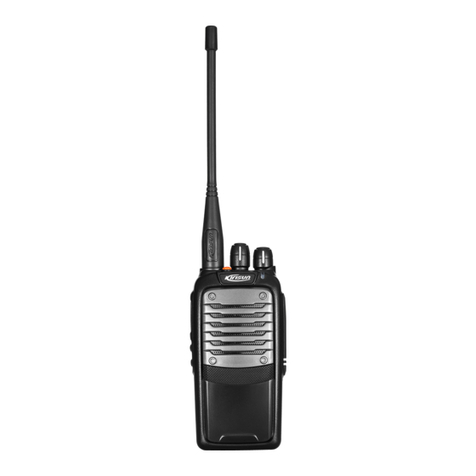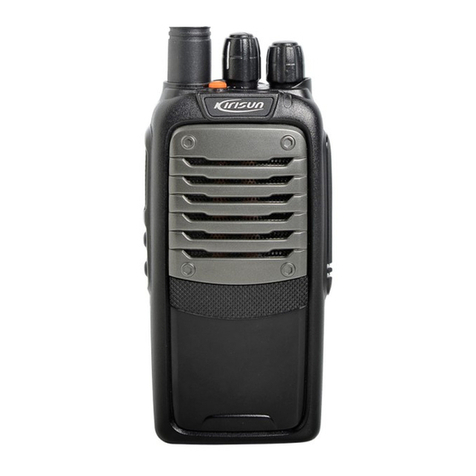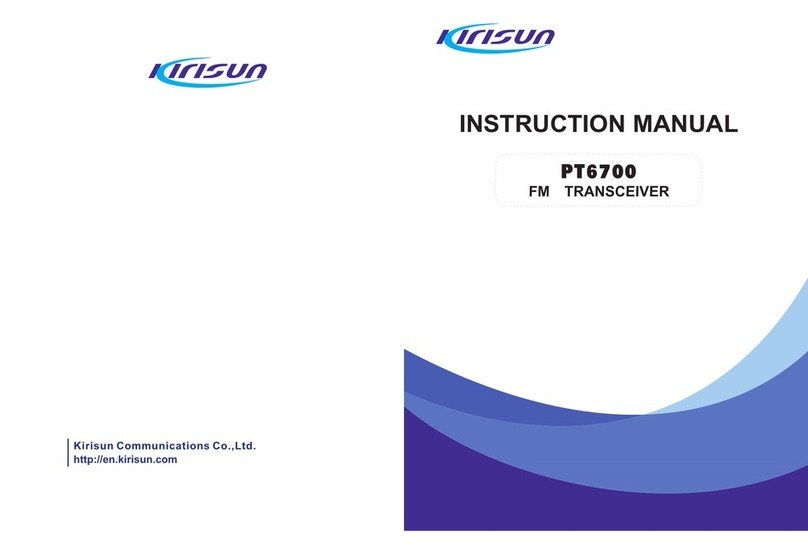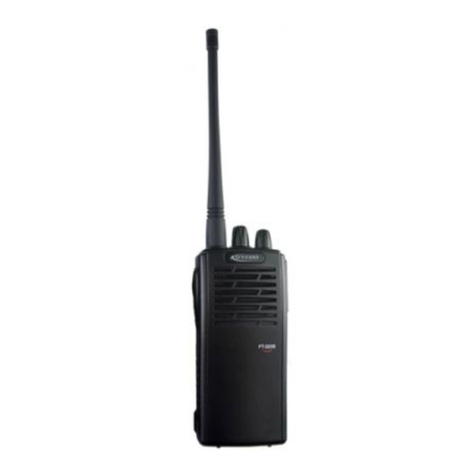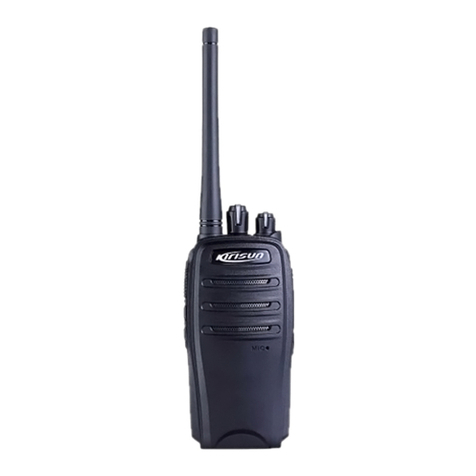11 12
6.3 Low Battery Warning
When the battery voltage drops too low, the LED
will flash. When the battery voltage drops too low
while transmitting, the LED flashes red and then the
radio stops transmitting. You need to recharge or
change the battery.
6.4 Voice Annunciation
This function can be enabled or disabled by the
dealer. There are two languages available: Chinese
and English. After selecting a channel by turning the
channel selector knob, the channel number will be
annunciated.
6.5 CTCSS/DCS
The dealer can set CTCSS/DCS tones on radio
channels, which enables you to ignore (not hear)
calls from other irrelevant parties who are using the
same channel. When you receive a signal that has a
tone different from the one set on your radio, you will
not hear the signal. Likewise, signals that you
transmit will only be received by parties whose
CTCSS/DCS tones are the same as yours.
Note:
* Using a CTCSS/DCS channel doesn't mean your
calls are private. If other parties' CTCSS/DCS tones
are identical with yours, they can hear your calls.
* Set the battery saving mode to be “O ff” or “1:1” if
the CTCSS/DCS decoding time is long.
6.6 Talkaround
You can expand the communication range of your
network through a repeater. If the radio is out of the
communication range, you can connect with other
radios through “Talkaround” mode.
Press the preprogrammed “Talkaround” button to
switch between “Talkaround” mode and “Repeater”
mode.
6.7 Scan Function
In order to receive calls from many different
channels, the radio can be programmed to scan
these channels.
6.7.1 Starting/Stopping Scan
a) Press the button set as “Scan” to start scanning.
While in scanning, the radio checks every channel in
the scan list and stops on which a signal is detected
until that signal disappears. If interval between signal
disappearing and continuing scanning has been
preset, the radio will remain on that channel.
b) Priority Scan:
One channel in the scan list can be set as the
priority channel, which enables it to have the highest
priority during scanning. The radio will scan a non-
priority channel firstly, then the priority channel, and
then the next non-priority channel, and then the
priority channel again, and the scan goes on like this.
If the priority channel and the “lookback time” have
been set for the scan list, when the radio is receiving
signals on a non-priority channel, and the scanning is
paused, the radio will check the priority channel at the
preset intervals. If there are signals in the priority
channel, it will stay at the priority channel; if there is
no signal, it will return to the original channel.
c) The revert channel (Tx channel) during the scan
can be designated by the dealer. There are following
options available:
Selected Channel: When pressing the PTT button,
the radio will transmit from the first channel of the
scan list.
Selected Channel + Currently Working Channel:
When pressing the PTT button during scanning, the
radio will always transmit from the first channel in the
scan list. When pressing the PTT button during the
scanning pause, the radio will always transmit from
the currently working channel.
Priority Channel: The radio will transmit from the
priority channel in the scan list when pressing the
PTT button.
Priority Channel + Currently Working Channel:
When pressing the PTT button during scanning, the
radio will always transmit from the priority channel.

